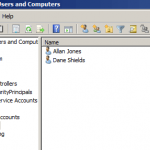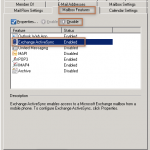Database Availability Groups(DAGs) in Exchange 2010 is data redundancy, high availability and disaster recovery feature. Adding Multiple mailbox servers to the DAG and replicating all mailbox databases with other member servers provides automatic failover recovery at the database level. You will need just two Mailbox Server to start with the high-availability features of Exchange 2010. The database switch-over time is less than 30 seconds which will significantly improve the overall up-time. Any server in the DAG can host a copy of a mailbox database from any other server in the DAG. Database replication is basically replicating the Mailbox Database from one member in the DAG to another member. You can also call Database replication as adding database copies. In this post we will see how to View Mailbox Database Replication Progress in Exchange 2010 DAG.
View Mailbox Database Replication Progress in Exchange 2010 DAG
When you are monitoring the high availability of the Exchange servers it is important to have a closer look on the replication health of each database copies that are hosted on different mailbox servers. Microsoft provides two cmdlets to monitor the replication status of the mailbox databases in the DAG. Get-MailboxDatabaseCopyStatus and Test-ReplicationHealth. You can use these two cmdlets in conjunction with the get-databaseavailabilitygroups to obtain desired results. Here are the few examples.
Get-MailboxServer | Test-ReplicationHealth
The above command will fetch all the Exchange servers with Mailbox role and pipe the server name to the “Test-ReplicationHealth” command which will then fetches the replication status of all the mailbox databases which are the part of a DAG and shows the status of each. See Screenshot below.
If the command finds any issues with respect to the database copy process, then an appropriate error will be displayed against the specific mailbox server. In this scenario, DB01 on MBG-MBX02 is in a suspended state. We must correct such issues before all the Databases can pass this test. Similarly, you can use Get-MailboxDatabaseCopyStatus cmdlet to validate that the database copy status is normal.
Get-MailboxServer | Get-MailboxDatabaseCopyStatus
As we did in the previous command, here we are also using Get-MailboxServer cmdlet to get all the Exchange servers with MailboxServer role and piped the server list to the Get-MailboxDatabaseCopyStatus command. This will output the copy status of each mailbox database both active and passive residing on all member servers as shown below.
In some environment, not all the databases servers will be hosting database copies, in other words not all mailbox servers are member database availability group. In this scenario we can construct the PS command as the shown below to test only the database servers which are added to the DAG.
Get-DatabaseAvailabilityGroup|ForEach{$_.Servers|ForEach{Test-ReplicationHealth -Server $_}}
In this way you can View Mailbox Database Replication Progress in Exchange 2010 DAG.
You may also like -
Latest posts by Bipin (see all)
- Install Exchange 2019 in Windows Server 2019 - November 28, 2020
- Why Backup your Microsoft Office 365 - November 27, 2020
- What’s New in VMware vSphere 7 - September 18, 2020









